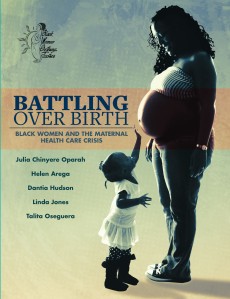Teresa Pitman examines why premature babies are rarely breastfed, how breastfeeding promotes better physical health for babies who are born early, and what helps mothers succeed at breastfeeding a premature baby.
I once wrote a magazine article about breastfeeding a premature baby. To research it, I contacted the pediatrician at a large regional hospital who was overseeing the neonatal intensive care unit at which most of the premature babies in my area are cared for. My own grandson Sebastian, who was exclusively breastfed, had been taken there after he was born eight weeks early. When I spoke to the pediatrician, however, he was surprised by my intention and did not understand why I would write such an article. Breastfeeding a premature baby? In his experience that hardly ever happened. So few premature babies were breastfed, he said, that it wasn’t worth talking about.
It’s true that, compared to full-term babies, the number of premature babies who are breastfed continues to be low, especially in babies who are born earlier than 32 weeks. In the Loire Infant Follow-Up Team (LIFT) study of 1733 babies in 2008, only 16% were breastfeeding at time of discharge from hospital.¹
It’s also true that some hospitals and physicians do not promote breastfeeding for premature babies, since these infants tend to gain weight more quickly drinking formula. When my grandson was born, one of the first things the nurse said to my daughter-in-law was that she should know that breastfeeding isn’t always the best thing for a premature baby. That nurse’s comment is not supported by research.
Roze et al., 2012, which combined data from the LIFT study and an earlier study, following 2163 babies, (the EPIPAGE study) described what the authors call “the breastfeeding paradox.”¹ Their analysis showed that the breastfed babies did indeed tend to gain weight more slowly than the formula-fed babies, even though fortifiers were added to the mother’s milk. However, when the baby’s neurodevelopmental status was assessed at two years and again at five years of age, those who were breastfed had significantly higher scores than those who were not. Even the babies that received human milk only during the time they were in hospital showed higher scores than those who had only formula in hospital. Babies who were breastfed for longer than two months (corrected age) had the best scores of all.

Breastfeeding can be life-saving for many of these tiny babies.
Human milk protects babies against necrotizing enterocolitis (NEC), a serious condition in which the baby’s intestines are damaged by infection. It occurs in about 10% of premature babies and there is a high mortality rate. Some have recommended probiotics as an alternate way to prevent NEC, but Repa et al., 2015 found that the probiotics only reduced the rate of NEC in breastfed infants, not in those fed formula, who of course already had a higher incidence of NEC than the babies who were getting human milk.²
Breastfeeding promotes better physical health later in life, especially for babies born early
Research suggests that premature infants are at higher risk of cardiovascular problems later in life. Singhal, Cole & Lucas, 2001 followed up nearly 1,000 children born prematurely in the United Kingdom who had been randomized to receive either formula or banked breast milk.³ As teenagers, those who had been given formula had significantly higher blood pressure than those who had been given breast milk. Those who had the highest proportions of human milk had the lowest blood pressures. This is important because high blood pressure is known to be a risk factor for cardiovascular problems such as heart attacks.
Some health care providers have been concerned that fragile premature infants might be infected by bacteria in breast milk or by contact with the breastfeeding mother. However, Schanler et al., 2011 examined such concerns and determined that there was no correlation between finding bacteria in breast milk and the baby developing an infection. (4) There was also no relationship between skin-to-skin contact with the baby and infection rates. They strongly advised against culturing the mother’s milk for bacteria before feeding, describing this as not a useful practice.
Why do breastfeeding rates remain so low for premature babies?

With all this supportive research, why do the rates remain so low? Partly to blame are hospital routines that often make it difficult for mothers to establish milk production and get the baby latching well. It is often common practice to schedule feedings and some require babies to be drinking from a bottle before the baby is “allowed” to start breastfeeding.
This is also a difficult time emotionally for the parents. Many parents find it hard to believe their baby will survive. It’s hard to focus on building up a good milk supply when you are not sure your baby will ever be big enough to drink it.
Supporting breastfeeding is often not a priority for members of hospital staff who are focused on other aspects of caring for babies who may have significant medical problems and needs.
I recall with my grandson that sometimes staff would be impatient while he was breastfeeding (and he was not a fast eater) because he was scheduled for some test or treatment. On one occasion, before he was able to feed at the breast, a nurse appeared with a bottle of formula for the baby, ignoring the container of pumped milk that Esmaralda had worked so hard to get. When we stopped her, she shrugged and said, “Oh, I forgot you were giving him breast milk.”
Kangaroo care

While quite a few NICUs have recognized the impressive amount of research and adopted “kangaroo care”—having mother or father skin-to-skin with the baby—they don’t always adopt the “kangaroo mother care” approach put forward by Dr. Nils Bergman. Often “kangaroo care” just means parent and baby get an hour or so in skin-to-skin contact each day. But in Bergman’s version—the version that is the foundation of the research demonstrating how this helps babies grow and develop—breastfeeding is part of it. In his version, the baby spends most of the time (not just an hour a day) in skin-to-skin contact and has free access to the breast.
Kangaroo mother care originated in developing countries where incubators and other technology were in short supply. But as research showed how helpful it was to the well-being of the premature baby, more and more hospitals in developed countries also began using it. Here’s how Bergman suggests getting started:
“Immediately after birth, the low birth weight baby should be dried, placed on mother’s abdomen or chest, and covered with a cloth or blanket, just as described for a full term baby. Routine midwifery care and medical assessment should be completed speedily, with the newborn remaining on mother. Observations and monitoring will determine what medical support should be provided, and how this should be done.
This may in our current contexts require that the baby be separated, which must be accepted. A very premature infant may be too physically immature to exhibit the self-attachment behaviors of the full term baby, but the opportunity for early skin-to-skin contact is important nevertheless.
A premature baby will need help to breastfeed. Colostrum should be expressed and given by spoon or cup, or by gavage (tube) if necessary. For premature newborns, mothers should recline at an angle of 30 degrees, and should avoid moving about too much. This helps the baby’s breathing and sense of balance. Newborns should be stimulated as little as possible in this period.
After the first hour
Many premature babies will be stable in skin-to-skin contact after 90 minutes, often to the surprise of health professionals. Decisions need to be made about feeding and fluids and continued care. Oxygen by mask or by CPAP [or continuous positive airway pressure] can easily be arranged while in skin-to-skin contact, drips and feeding tubes can be secured sideways.
If the baby is stable and the mother well, the carrier can be used. A premature baby should not be fed on demand, it needs to be fed far more frequently, every hour or two, day and night. This means loosening the wrapper regularly, so that mother can express breast milk. This is good for the baby and mother, though baby must never get cold.”

For more information about this approach of caring for a premature baby and some of the research supporting it, see kangaroomothercare.com.
Hold Your Prem
What helps when breastfeeding a premature baby?
- Know the facts about why breastfeeding is so important for your baby.
- Seek out support. Lactation consultants and peer supporters can be a great resource for breastfeeding help and may be able to put you in touch with other mothers who have been through the experience of mothering a premie. When my grandson was born, one kind mother dropped by the hospital to leave food and drinks for my daughter-in-law. She knew from her own experience as the mother of a baby born at 30 weeks how important it was to stay well fed and hydrated. You’ll also need practical help when you take your baby home as caring for him will mean extra work.
- Find out what arrangements are possible for staying near your baby. In some hospitals, you may be able to stay 24/7 in a room by the nursery; in others, there may be no option but to come in during the day and go home at night. It never hurts to ask: one mother I know was given a bed in an on-call room so she could be present for her baby’s night feedings.
- Maximize skin-to-skin time and do kangaroo care if at all possible. Just having your baby skin-to-skin will increase your milk production.
- Remove milk from the breast frequently, day and night. Short, frequent feedings are more helpful in establishing milk production than longer, widely spaced feedings. Hand expression may be most effective at first; a breast pump may be helpful later. (Hand expressing after you pump can increase milk removal and therefore milk production.) Of course, as soon as the baby is able to breastfeed, that becomes another way to remove milk. You may find that you are producing more milk than your baby needs at first. That’s okay, he’ll catch up!
- Avoid bottles if possible. Sometimes hospital policy requires that babies have bottles prior to breastfeeding, and fighting the policy may be more stress than parents can deal with. Working with a lactation consultant can help you get your baby breastfeeding effectively even if bottles have been given.
- Watch your baby for signs of readiness to breastfeed. Your baby may have become used to the nursery routines, but as he gets stronger you’ll want to respond to his hunger cues.
Every baby is an individual, and premature babies will have different challenges than those who are full term.

Two keys to success
- Continue to remove milk so that you have a generous supply ready when your baby develops the strength and skills he needs to feed at your breast.
- Find good, patient helpers who can help you and your baby figure out an approach to breastfeeding that will work in your situation.
My eight-week-early grandson is now a healthy, very active teenager who loves to camp and do anything outdoors, and whose current career ambition is to be a history professor. He breastfed for about three-and-a-half years and that gave him a solid foundation despite his surprise arrival two months before we expected to meet him.
See
References
 Roze, J-C., Darmaun, D., Flamant, C., Picaud, JC, Savagner, C, Claris, O., Lapillonne, A., Mitanchez, D., Branger, B., Simeoni, U., Kaminsk,i M., & Ancel, P.Y. (2012). The apparent breastfeeding paradox in very preterm infants: relationship between breastfeeding, early weight gain and neurodevelopment based on results from two cohorts, EPIPAGE and LIFT. BMJ Open, 2(2):e000834, doi: 10.1136/bmjopen-2012-000834.
Roze, J-C., Darmaun, D., Flamant, C., Picaud, JC, Savagner, C, Claris, O., Lapillonne, A., Mitanchez, D., Branger, B., Simeoni, U., Kaminsk,i M., & Ancel, P.Y. (2012). The apparent breastfeeding paradox in very preterm infants: relationship between breastfeeding, early weight gain and neurodevelopment based on results from two cohorts, EPIPAGE and LIFT. BMJ Open, 2(2):e000834, doi: 10.1136/bmjopen-2012-000834.- Repa, A, Thanhaeuser, M, Endress, D., Weber, M., Kreissl, A., Binder, C., Berger, A., & Haiden, N. (2015). Probiotics (Lactobacillus acidophilus and Bifidobacterium infantis) prevent NEC in VLBW infants fed breastmilk but not formula. Pediatr. Res. 77(2), 381-8.
- Singhal, A., Cole, T.J., & Lucas, A. (2001). Early nutrition in preterm infants and later blood pressure: two cohorts after randomised trials. Lancet. 357(9254), 413-9. 10.1016/S0140-6736(00)04004-6.
- Schanler, R.J., Fraley, J.K., Lau, C., Hurst, N.M., Horvath, L., & Rossmann, S.N. (2011). Breastmilk cultures and infection in extremely premature infants. J. Perinatol. 31(5), 335-8.
See too
Baley, J. MD, Committee on Fetus and Newborn, AAP. (2015) Skin-to-skin care for term and preterm infants in the neonatal ICU Pediatr. 136(3), 596-99.
Gibbs, D., Boshoff, K. & Stanley, M. (2015). Becoming the parent of a preterm infant: A meta-ethnographic synthesis. British Journal of Occupational Therapy, doi: 10.1177/0308022615586799.
Lewandowski, A.J., Lamata, P., Francis, J.M., Piechnik, S.K., Ferreira, V.M., Boardman, H., Neubauer, S., Singhal,A., Leeson, P., & Lucas, A. (2016). Breast milk consumption in preterm neonates and cardiac shape in adulthood. Pediatrics 138(1) e20160050; DOI: 10.1542/peds.2016-0050.

Teresa Pitman mother of four and grandmother of eight lives in Canada and has been supporting mothers for more than 35 years with birth and breastfeeding. She is a prolific writer and popular speaker, much loved by all whose lives she touches.
Support:























September 4, 2017 at 5:27 pm
My sister-in-law and I gave birth to premature girls less than a week apart. I was successful at breastfeeding (after 4 months of trying), while she was not. I feel that the things that helped me to succeed were:
1. Prior experience. This was her first child, but I had already breastfed 3 children, 1 of whom spent time in the NICU. He was full-term, but it gave me familiarity with pumping for a NICU baby.
2. Preparation beforehand. Her early delivery was a surprise. I knew for months that I would have to deliver early, so I had time to read up on strategies for nursing a preemie.
3. NICU set-up. My NICU had been remodeled just before my daughter was born. Each baby had a private room with an adjacent area for mom to sleep and pump in. There was both a breast pump in the room at all times and I was sent home with a hospital-grade pump to use for the duration of her NICU stay. My sister-in-law had to rent a pump herself for home and share a pump in a single-occupant “pumping room” at her NICU, meaning she couldn’t always keep to a strict schedule.
I did experience problems with the schedule at the NICU interfering with my breastfeeding schedule. Most of the nurses were supportive of my efforts, although one upset me very much when I overheard her mocking my attempts behind my back. Since my daughter eventually got the hang of it, and didn’t wean until she was 3 years old, I figure I got the last laugh, though.
LikeLike
September 4, 2017 at 5:35 pm
Thank you for sharing your experience, Heather to help other mothers of premature babies.
LikeLike
September 18, 2017 at 4:04 am
Thank you for writing this article to support mothers of premature babies who would like to breastfeed. It isn’t easy! They need all the support that they can get.
LikeLike
November 18, 2017 at 3:33 pm
As a mum to a 31 weeker I am still breastfeeding at 7 months. I had a lot of support from nurses and midwives whilst he was on NICU and that really made the difference, it wasn’t always easy but we persevered.
LikeLike